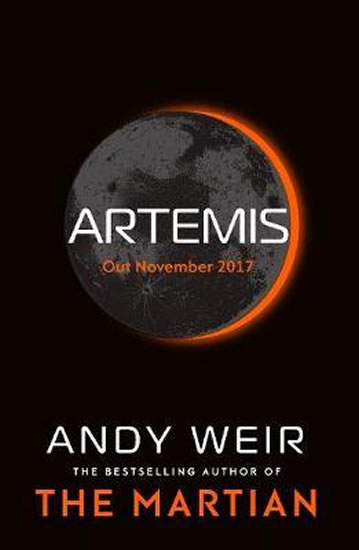

Jazz becomes involved in Landvik’s scheme to take over the aluminium industry. Where The Martian was essentially a modern Robinson Crusoe story, Artemis is a heist novel. Unlike Mark Watney from The Martian, who is for the best part of the story in contact with others through cobbled-together technology, Jazz’s only real relationship outside the moon is Kevin, with whom she has kept up a kind of pen-pal relationship for some time, but whose presence in her life also becomes vital. Jazz has to deal with people like the city founder Fidelis Ngugi, Trond Landvik, an investor with shady business connections, Martin Svoboda, a nerd scientist who is instrumental in Jazz’s schemes, as well as more personal relationships, like her antipathy for Dale, a gay man who has had an affair with her boyfriend. There is also a more diverse cast of characters in this book.

Her father is a devout Muslim, a welder of extraordinary skill, who had had hopes that his daughter would follow in his footsteps rather than engage in illegal smuggling. Jazz has lived most of her life on the moon after emigrating from Earth when she was a child with her father. This time, however, Weir’s protagonist is a young woman, Jasmine (Jazz) Bashara. The lower air pressure means water boils at 61 degrees Celsius on the moon too cold, apparently, for coffee drinkers from Earth.Īnd if you ever wondered what a tourist trap at the Apollo 11 landing site would be like, this is your book. If you’re an Earther visiting the Moon, you won’t like Moon coffee, since physics dictates that it tastes like shit. But he is also capable of adding another layer to this. This is the kind of detail Weir is good at. For instance, Artemis’s atmosphere is kept at 20 per cent of Earth’s air pressure, since the removal of gas elements like nitrogen and argon, unneeded for human survival, allows for this reduced air pressure which takes strain off the city’s hull.
Artemis weir software#
Weir, a software engineer and devotee of space and science, uses his knowledge for convincing world building that covers everything from how the outer shells of the city of Artemis were constructed, their safety features, how the city is supplied with oxygen and how this has been achieved in tandem with its economic interests (oxygen has been produced as a side product of aluminium smelting), to interesting bits of trivia that give detail and richness to his world. The novel’s scenes and much of its plot is also based around real science. Like The Martian, it is set off-world, this time on the Moon. Andy Weir’s new book Artemis has many of the same elements as his break-through bestseller, The Martian.


 0 kommentar(er)
0 kommentar(er)
